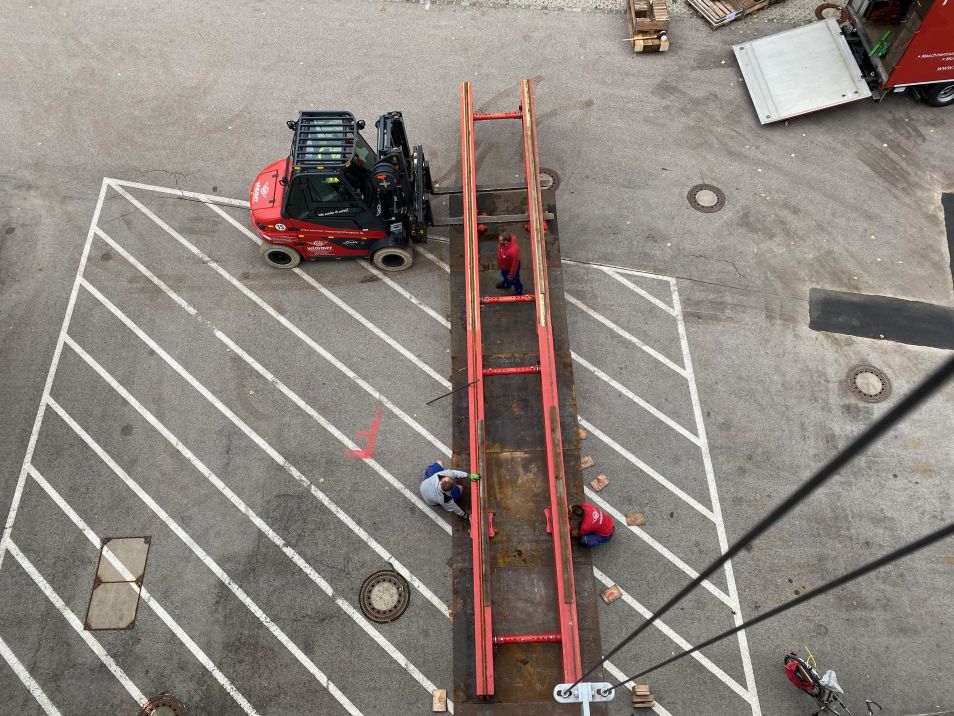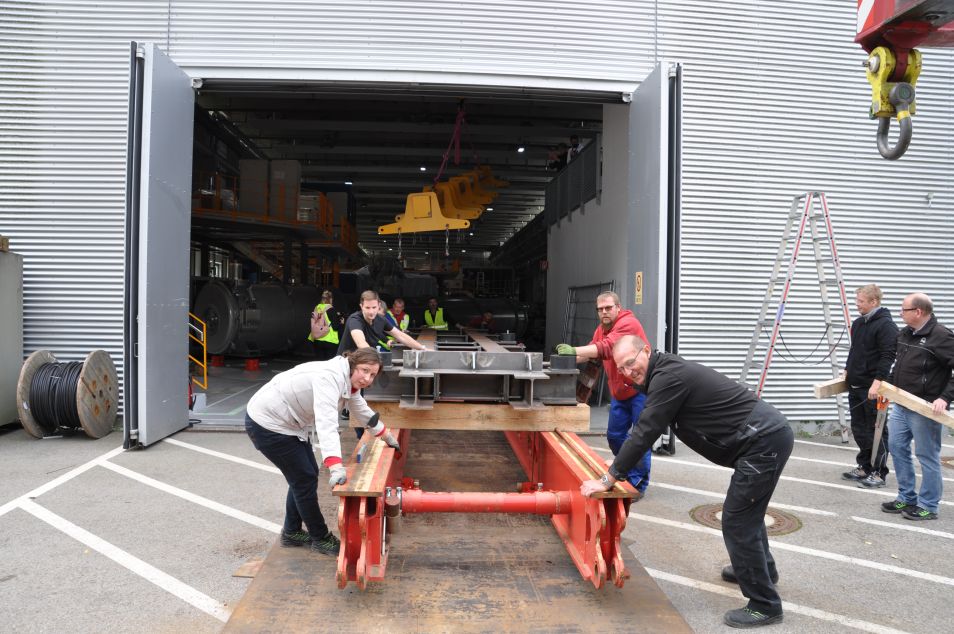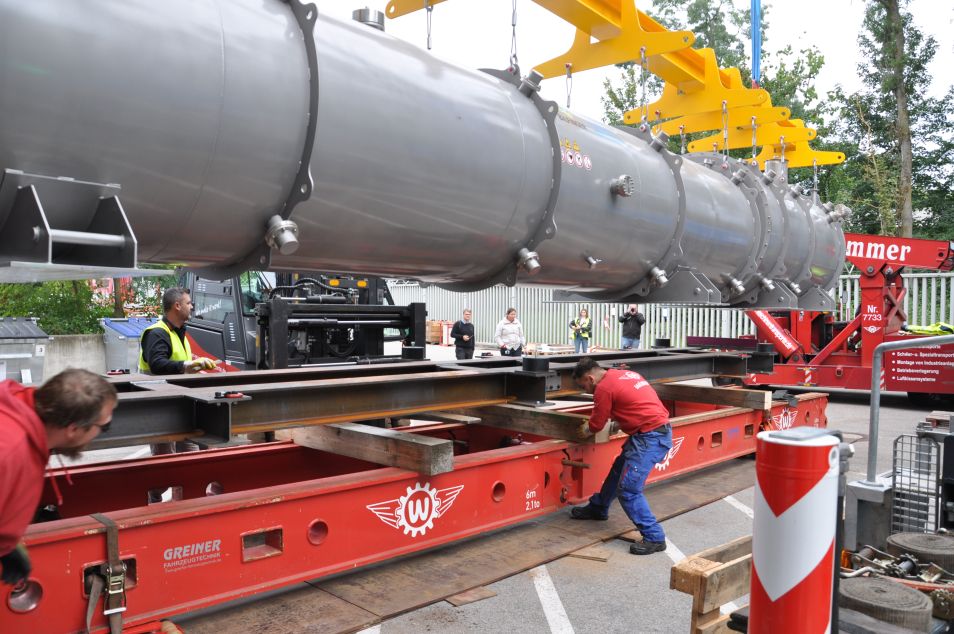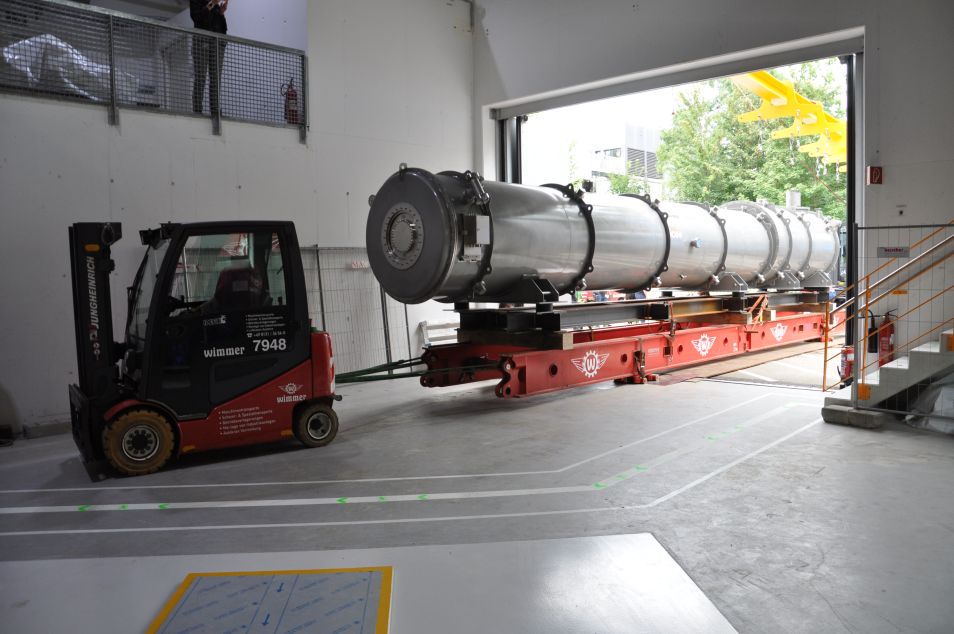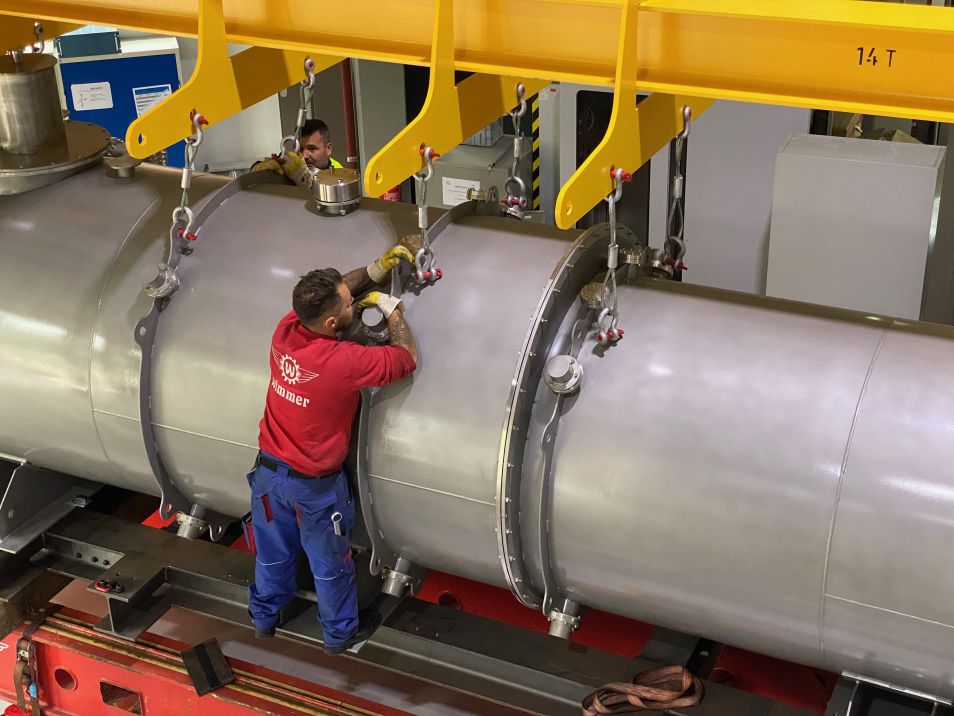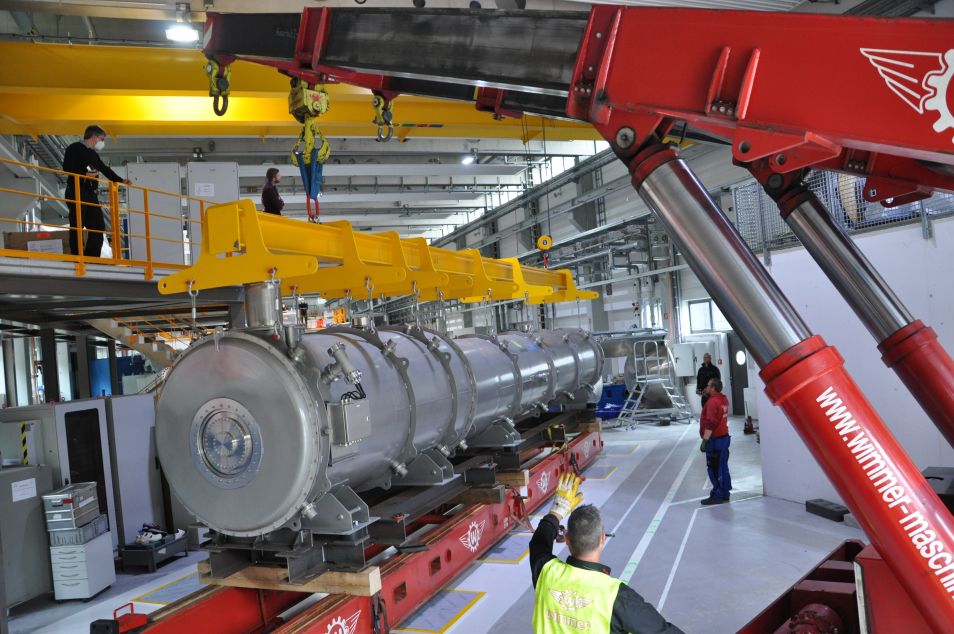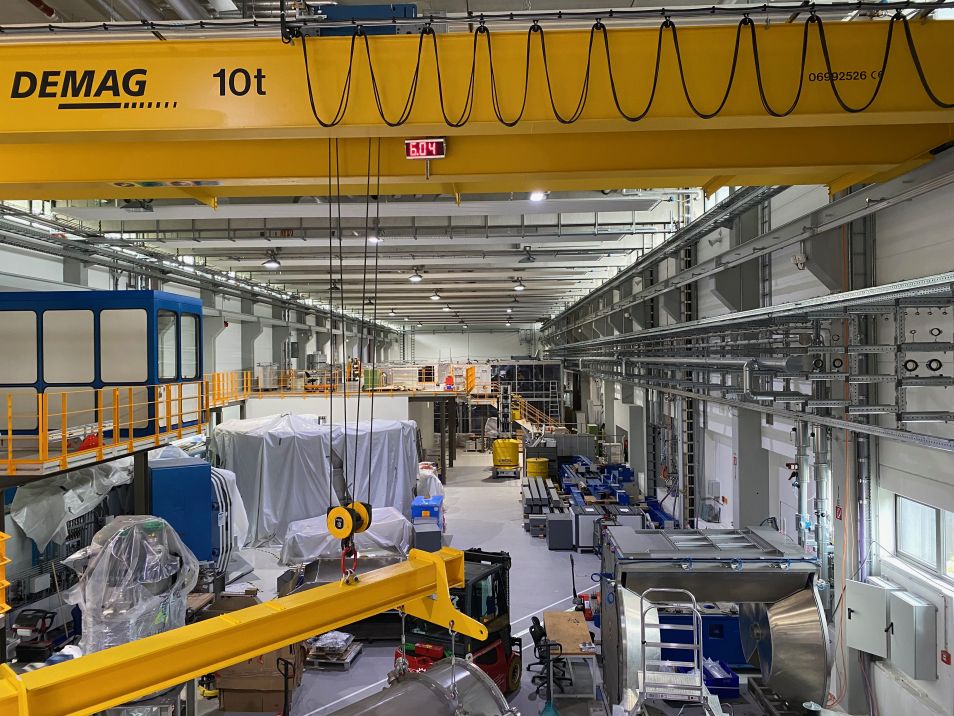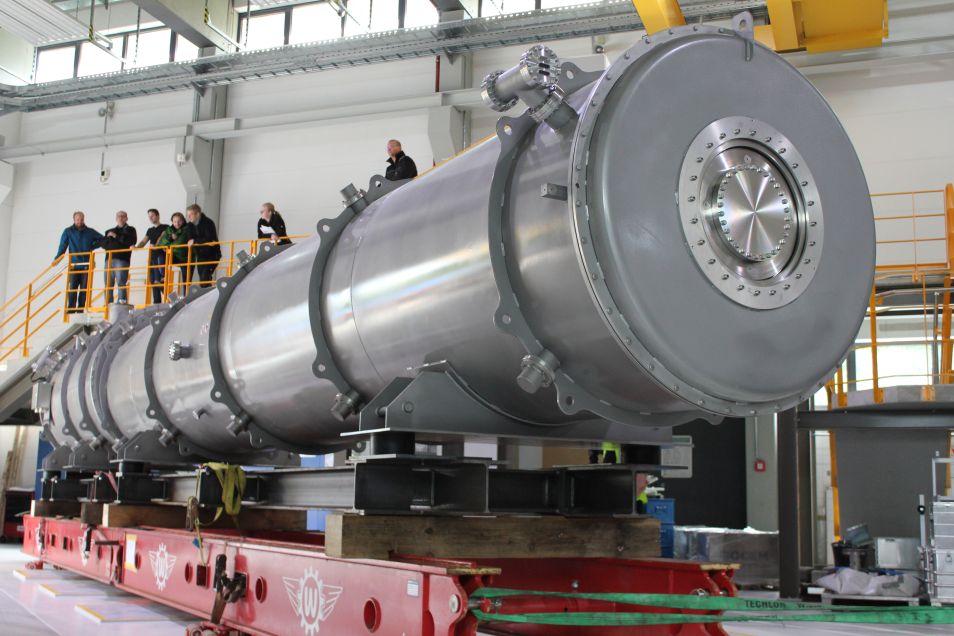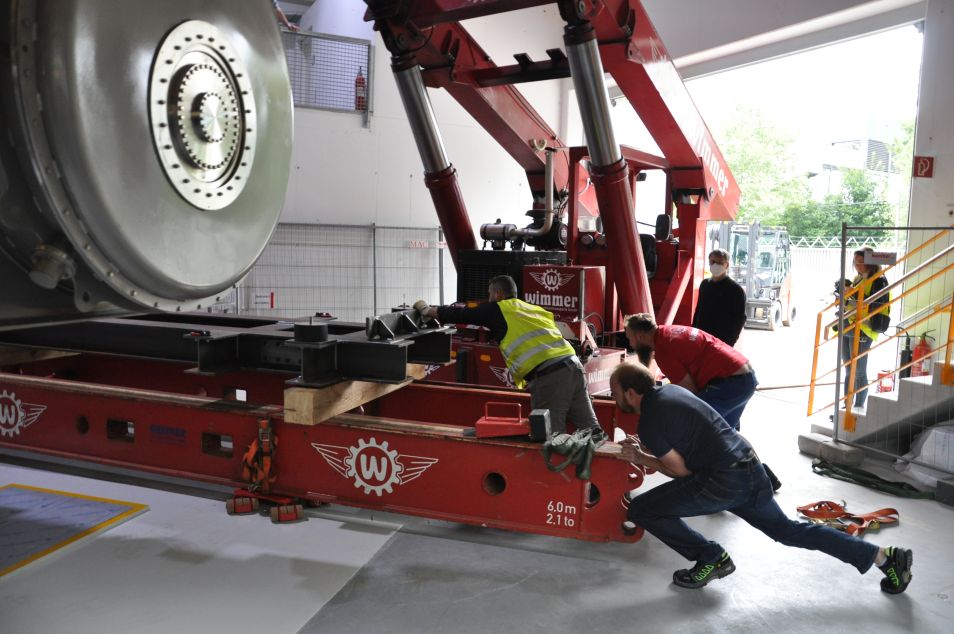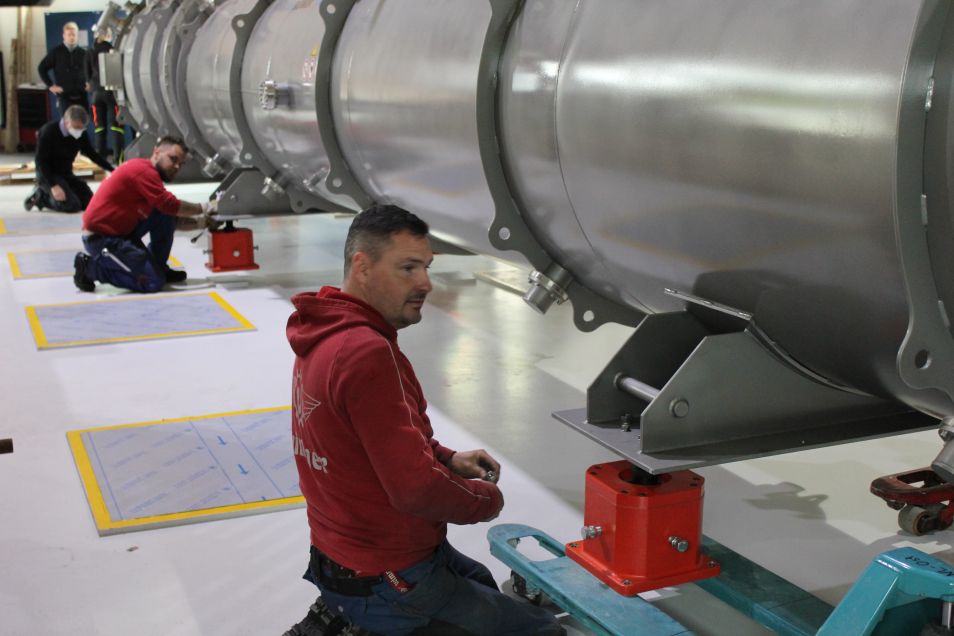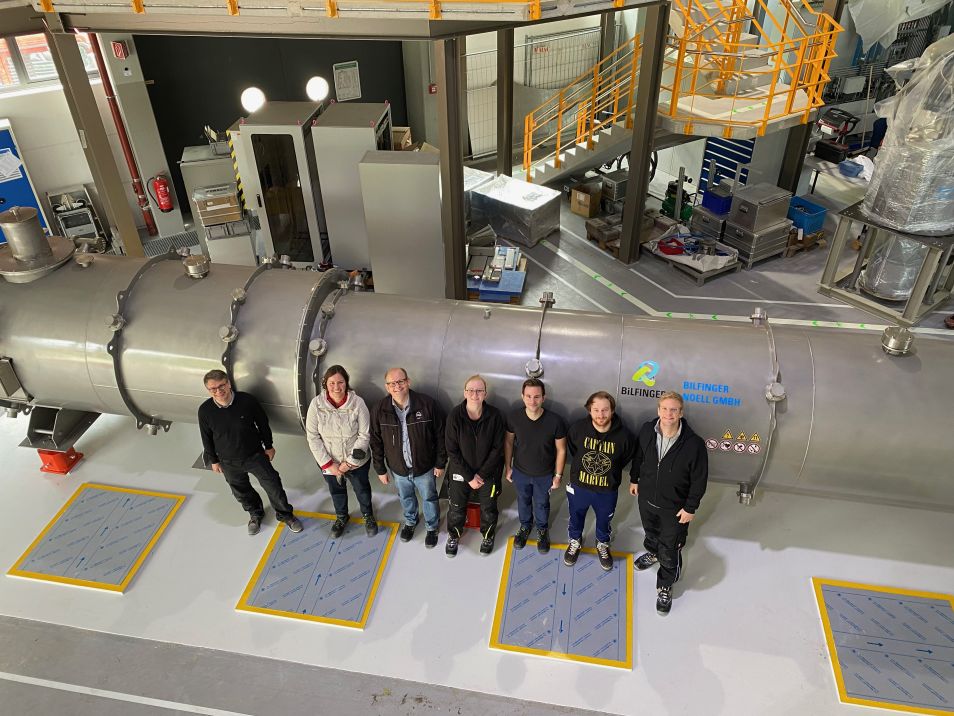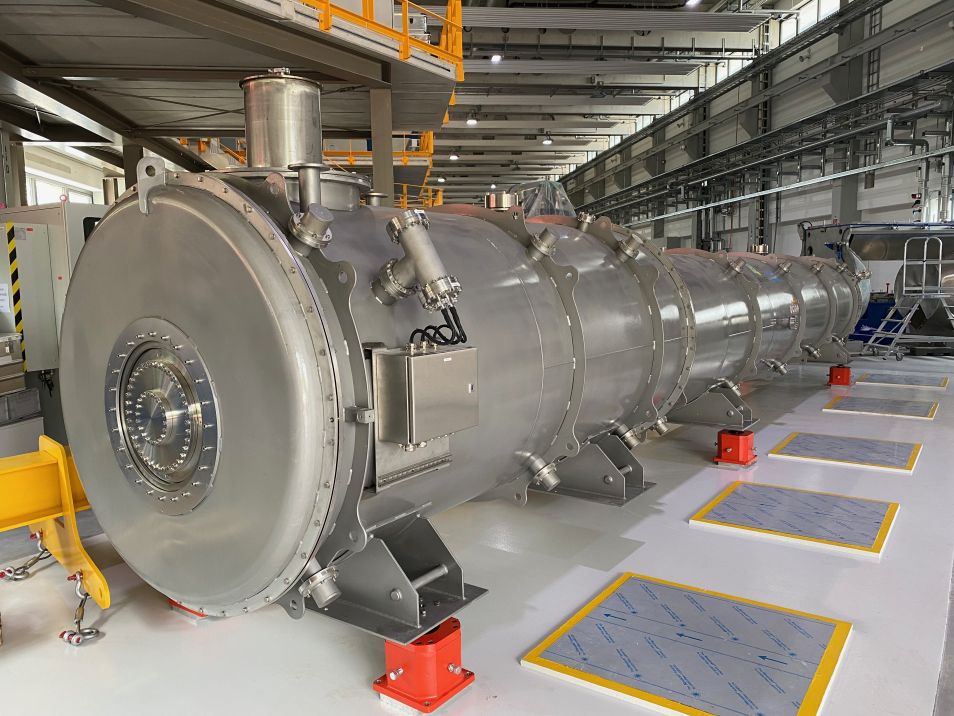MLZ is a cooperation between:
 > Technische Universität München
> Technische Universität München > Helmholtz-Zentrum Hereon
> Helmholtz-Zentrum Hereon
 > Forschungszentrum Jülich
> Forschungszentrum Jülich
MLZ is a member of:
 > LENS
> LENS > ERF-AISBL
> ERF-AISBL
MLZ on social media:

MLZ (eng)
Lichtenbergstr.1
85748 Garching
Giant pipe for the tiniest particles
Its dimensions are gigantic, but the particles it is to study are all the tinier for it: a 12-metre-long magnet has now been delivered to the Heinz Maier-Leibnitz Centre and hoisted into the Neutron Guide Hall East by three cranes. The superconducting magnet will observe the decay of the neutron with the highest precision on the new PERC instrument. This process is very important, for example, for the formation of light particles after the Big Bang or the energy production of the sun. The MLZ recorded the delivery photographically and on film.
Professor Bastian Märkisch, elementary particle physicist at the Technical University of Munich, goes into raptures when he talks about his new experiment PERC, which is currently being delivered to the Neutron Guide Hall East of the MLZ. PERC is being set up at the beam site of the MEPHISTO instrument. Bastian Märkisch is certain that a unique item is being lifted off the truck here: “There is no magnet of this kind anywhere in the world.” Not only is the size of the 12-metre-long colossus impressive, but the measurements it will one day enable sound groundbreaking.
Precision not only in unloading
PERC measures how the neutron decays into an electron, proton and antineutrino after a lifetime of 15 minutes. There are many things about decay that are of burning interest to the elementary particle physicist. “Perhaps the most important measurement is the asymmetry in the angular distribution of the nascent electrons to the spin direction of the neutrons,” says Märkisch, while two cranes hoist the giant tube onto a heavy-duty trolley. To track down the weak interaction, as the physicist calls it, responsible for the decay of the neutrons, he has to measure the neutron decay with the highest precision. The crane drivers and staff also need precision and a sure instinct when loading the pipe. After all, inside it is a complicated system of superconducting coils, supply lines and sensors that is sensitive to vibrations.
Ten times more precise measurement
“In the precision of the measurements, we have felt our way forward.” Currently, the accuracy is to the third decimal place; with PERC, the fourth decimal place would not be a problem. “So we’re measuring about ten times more accurately than anyone before, looking for new physics beyond the standard model of particle physics,” says Märkisch. To this end, they want to find the “footprints of new heavy particles” and are also “suppliers for precision neutrino experiments” with the results, says Märkisch, who contentedly snaps another photo as the tube glides into the hall on the heavy-duty trolley. The physicists at TUM also want to observe neutron decay in order to calculate more precisely how many light atomic nuclei were created after the Big Bang or how high-energy fusion processes take place in the sun. PERC is to help solve all these puzzles with the most precise neutron measurements.
Fewer interference factors at FRM II
The accuracy is reflected in the size: the part of the PERC magnet where the decay of neutrons is observed is three times as long as the predecessor model at the Institut Laue-Langevin (ILL) PERKEO III, its magnetic field is about ten times stronger and measures ten times more decays in comparison. “And we have other advantages here at the FRM II research neutron source,” Märkisch lists and points to the neutron guide hall east, which is about the size of a football field. “The beam of cold neutrons is comparable to other high-flux sources like the ILL, but here the neighbouring instruments are many metres away, so the measurements are much less disturbed.”
Eight metre magnet made from one piece
The decay of neutrons from FRM II is observed in PERC over a flight path of eight metres. Despite the long lifetime of the cold neutrons, less than one in 100,000 decays over this long distance. The high number of charged particles from the neutron decays are detected at the ends of the magnet by fast detectors. The first coil of the superconducting magnet also has a unique status: an eight-metre long solenoid is precisely made from one piece.
And what happens now that the magnet is in place on its six feet? “Next, the cooling system for the magnet is delivered,” reports Professor Märkisch, who is on his knees to make sure that the pipe is standing in water. It cools the magnet with liquid helium to minus 267°C (4.5 Kelvin) operating temperature; only then does the magnet become superconducting. You can already guess that the refrigeration plant will also be huge: it is supposed to temporarily store about 13 bathtubs full of liquid helium.
Further information:
PERC stands for Proton Electron Radiation Channel.
PERC-Website: https://www.groups.ph.tum.de/ene/research/perc/
The project is funded by the Deutsche Forschungsgemeinschaft within the programme SPP 1491 “Precision experiments in particle- and astrophysics with cold and ultracold neutrons”.
Partner of the PERC project:
• Technical University of Munich
• Heidelberg University
• Technical University Wien
• University Mainz
• Institute Laue-Langevin Grenoble (France)

Andrea Voit
Press and public relations FRM II
MLZ is a cooperation between:
 > Technische Universität München
> Technische Universität München > Helmholtz-Zentrum Hereon
> Helmholtz-Zentrum Hereon
 > Forschungszentrum Jülich
> Forschungszentrum Jülich
MLZ is a member of:
 > LENS
> LENS > ERF-AISBL
> ERF-AISBL
MLZ on social media:



